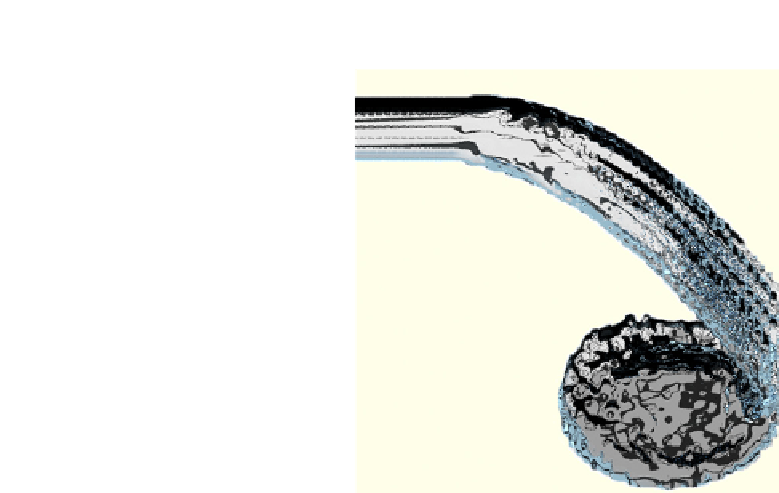Graphics Reference
In-Depth Information
FIGURE 8.21
Water simulation using sSPH.
(Image courtesy of Di Cao.)
between an SPH particle and an implicitly defined sphere is that one of the kernel's parameters is its
support distance, which is a function of its mass. It should be noted that there are different ways to
model particles and compute values in SPH and that the material here follows the work of Muller
In implementing the fluid dynamics using SPH particles, the main concerns are about conserving
mass and updating the fluid particle representation over time due to the forces on the particles.
An additional practical consideration is how to display the fluid—how to reconstruct the fluid from
the particle definition at any one point in time for display—and, especially for liquid, how to identify its
surface. Similar to a standard particle system, at any one point in time a particle has a position and
a velocity and is subject to various forces. The forces considered are those captured in the CFD
equations—the pressure gradient and viscosity of the fluid, as well as environmental forces such as
gravity. In addition, in the case of liquids, a surface tension force can be modeled.
An SPH particle carries an additional property of mass. This mass is distributed through space
according to a smoothing kernel function. In fact, any property of the fluid can be distributed through
space using a smoothing function. A property,
s
, at any given location,
r
, can be computed using
Equation
8.44
. The gradient of a property and the Laplacian of a property, useful in computer pressure
gradient and viscosity, can be computed using Equation
8.43
.
X
s
j
r
j
W
h
sðrÞ¼
m
j
r r
j
(8.42)
j




Search WWH ::

Custom Search